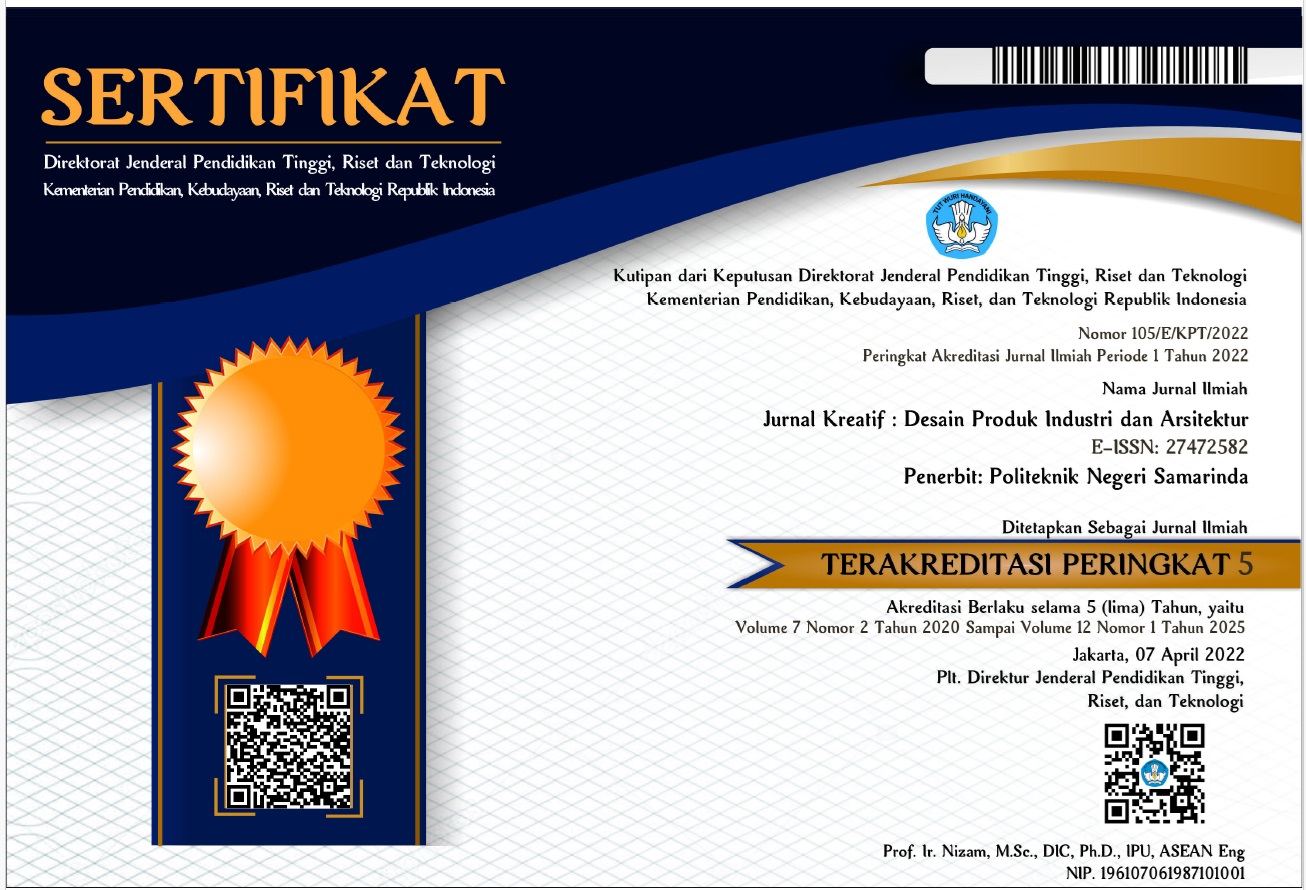DAYAK KENYAH CULTURAL RESEARCH PLANNING IN SAMARINDA EMPLOYMENT ON THE VIEW OF CONTEMPORARY BUILDING
PERENCANAAN RISET KEBUDAYAAN DAYAK KENYAH DI SAMARINDA PENEKANAN PADA TAMPILAN BANGUNAN KONTEMPORER
 Abstract views: 379
,
Abstract views: 379
,
 pdf downloads: 277
pdf downloads: 277
Abstract
This study aims to design a Dayak Kenyah Cultural Research Center in Samarinda's Pampang Cultural Village using an emphasis on the appearance of contemporary Kenyah Dayak buildings and spatial organization. The benefits of this research resulted in a Cultural Research Center with good spatial planning and circulation and a place of education about Dayak Kenyah culture for the general public. The research method used is descriptive analytic and synthesis analysis with data collection techniques using observation techniques from observing facts in the field, interviews, and analysis of documents from literature studies related to the design concept of Dayak Kenyah Cultural Research Center. The results of the study are in the form of designing facilities by adjusting contemporary ethnic designs on building facades that provide elements of Dayak Kenyah cultural values such as adjusting the color of buildings to the typical colors of Dayak Kenyah culture and paying attention to the spatial planning in buildings used as places for cultural activities and research on Dayak Kenyah culture.
Downloads
References
W. Hadibrata, "Musik Sampek sebagai Kemasan Wisata di Desa Pampang Samarinda Kalimantan Timur," Jurnal
Program Studi Etnomusikologi FSP ISI Yogyakarta., 2016.
E. Pramono, "Lasem Heritage Center Pendekatan pada Arsitektur Etnik Kontemporer," Jurnal Program Studi
Arsitektur Universitas Muhammadiyah Surakarta, 2016.
Putu Bagus, "Desain arsitektur gedung seni pertunjukan Yogya dengan pendekatan fleksibilitas ruang dan
arsitektur Etnik Kontemporer," Jurnal Program Studi Arsitektur Universitas Atmajaya Yogyakarta., 2010.
Sansoedin, "Konsep Tata Ruang dan Pengelolaan Lahan Pada Masyarakat Dayak Kenyah di Kalimantan Timur.,"
Copyright (c) 2021 Cisyulia Octavia HS

This work is licensed under a Creative Commons Attribution-ShareAlike 4.0 International License.
Authors who publish with this journal agree to the following terms:
- Copyright on any article is retained by the author(s).
- The author grants the journal, right of first publication with the work simultaneously licensed under a Creative Commons Attribution License that allows others to share the work with an acknowledgment of the work’s authorship and initial publication in this journal.
- Authors are able to enter into separate, additional contractual arrangements for the non-exclusive distribution of the journal’s published version of the work (e.g., post it to an institutional repository or publish it in a book), with an acknowledgment of its initial publication in this journal.
- Authors are permitted and encouraged to post their work online (e.g., in institutional repositories or on their website) prior to and during the submission process, as it can lead to productive exchanges, as well as earlier and greater citation of published work.
- The article and any associated published material is distributed under the Creative Commons Attribution-ShareAlike 4.0 International License













